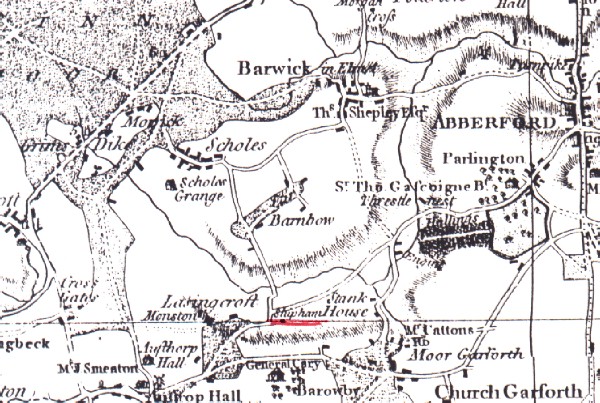"29 May. Took the measuring-wheel,
and having surveyed to the extent of the
parish at Wikebridge, continued it by
Secroft, (leaving Penwell Dale on the right
hand) and Grimesdike, or Morrickfur, to
Winmoor, thence by Scoles Outwood (which an
old man told me himself can remember a thick
wood, though now there is not a tree upon
it), over Cock-beck; thence over Rakehill,
which, whether it have any historical
relation to the memorable battle I cannot
tell; crossed the yet little beck of the Cock
again. thence over the Car and up Windlehill,
to Berwick, seven miles by measure, (from
Leeds church to that at Berwick) though but
five by computation.
Was disappointed of my expectations in
the church, there being no monuments for the
ancient family of the Gascoignes or Ellis's,
save only fragments of their arms, etc. in
the painted glass, but most of the windows
defaced etc. But was mightily pleased with a
very remarkable mount, which I surveyed
strictly, (vide the dimensions elsewhere),
which is to this day called the
Hall-tower-hill, which confirms my former
notion, that when the Saxon kings had their
regional centre at Leeds, this was a manor
grange farm, country seat, appendant
thereonto.
Besides, there is a universal
tradition of a king's residence there, etc.
The old parsonage house is demolished and now
re-edifying by Mr Tankard, the Duke of Leed's
chaplain, but I found little remarkable
there, save the King's arms in painted glass,
which yet must be after Edward III, because
the flowers-de-lis are limited to three: King
Henry V, first stinted them to three.
Returned by Scoles over another part of
Winmoor, etc. Observed the toll-gatherers
booth, where the agents of Sir Thomas
Gascoigne are ready to receive toll of the
carriages, which, at a penny a pair of
wheels, amounts to a considerable sum."
|


